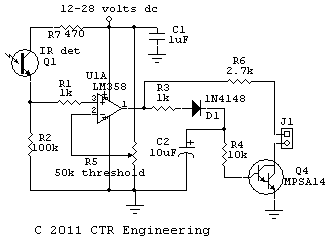Train Layout Wiring and Controls
|
|
|
Wiring
This is how I am wiring my HO model train system. It will eventually include
Box colors indicate tracer color of main cables, clear boxes are open wires Colors inside boxes are wire colors in each cable. I always start at the
I’ve now decided to number things by the layout block. There are seven blocks This diagram shows turnout (switch) wire codes in the yard area. There are Main lines and spurs/sidings get Y numbers. Crossovers get a C number.
This is the actual area shown above. It is about 20 feet deep.
My agricultural and rural residential area is in the sections that lift out. Track layout, for now, is finished. Base coats are all that is complete at this time. The real landscaping will
New logic panel. The panel below controls this layout.
This is old technology diode and relay logic. This is because I am using DC,
It took about 5-10 hours to do the logic. I really enjoyed thinking through What this does is: When a siding or spur is not selected, nothing moves on it. When a siding is selected on one end, things can only move away from the open When a path is selected to an outside mainline track, the control for that When the outside main lines are not connected through a path into center For example if I route a train into the Wye from M2, the control for M2 has The same is true if I use a cross-over to move a train across M2 into the My New Control Center
My IR detector and track disconnect circuit board:
My turn out control board:The board below doubles as a track power control board, plus it can run some
Next to each toggle is an indicator LED, showing green for normal or red for
There is also a steady output of 12 volts positive for normal and 12 volts
At work. Powering 12 turnouts. Works flawlessly.
Note these are BASIC circuits, and not necessarily the final circuitry.
This is my basic turnout control wiring. It has the following features: 1.) Momentary power to turnout motor, but reliable hard movement. 2.) Remembers position 3.) Inexpensive 4.) Two wires to turnout when D1 D2 diodes are at turnout 5.) DL1 and 2 can be track signals. As many signals as needed. One additional 6.) Instant reset time for next throw. No waiting.
My IR detector. This detector, with the correct IR LED, will detect a
It has either open collector high current output, or sources enough current
Signal light logic to interface with track control circuits
J2 open, DL2 lights
J2 shorted, DL1 lights
This circuit automatically reverses the wiring at a Y.
It goes to the Blue and Blue-white wires at S7g in the following layout:
For comments please contact me at (type it in!!):
copyright 2011
|
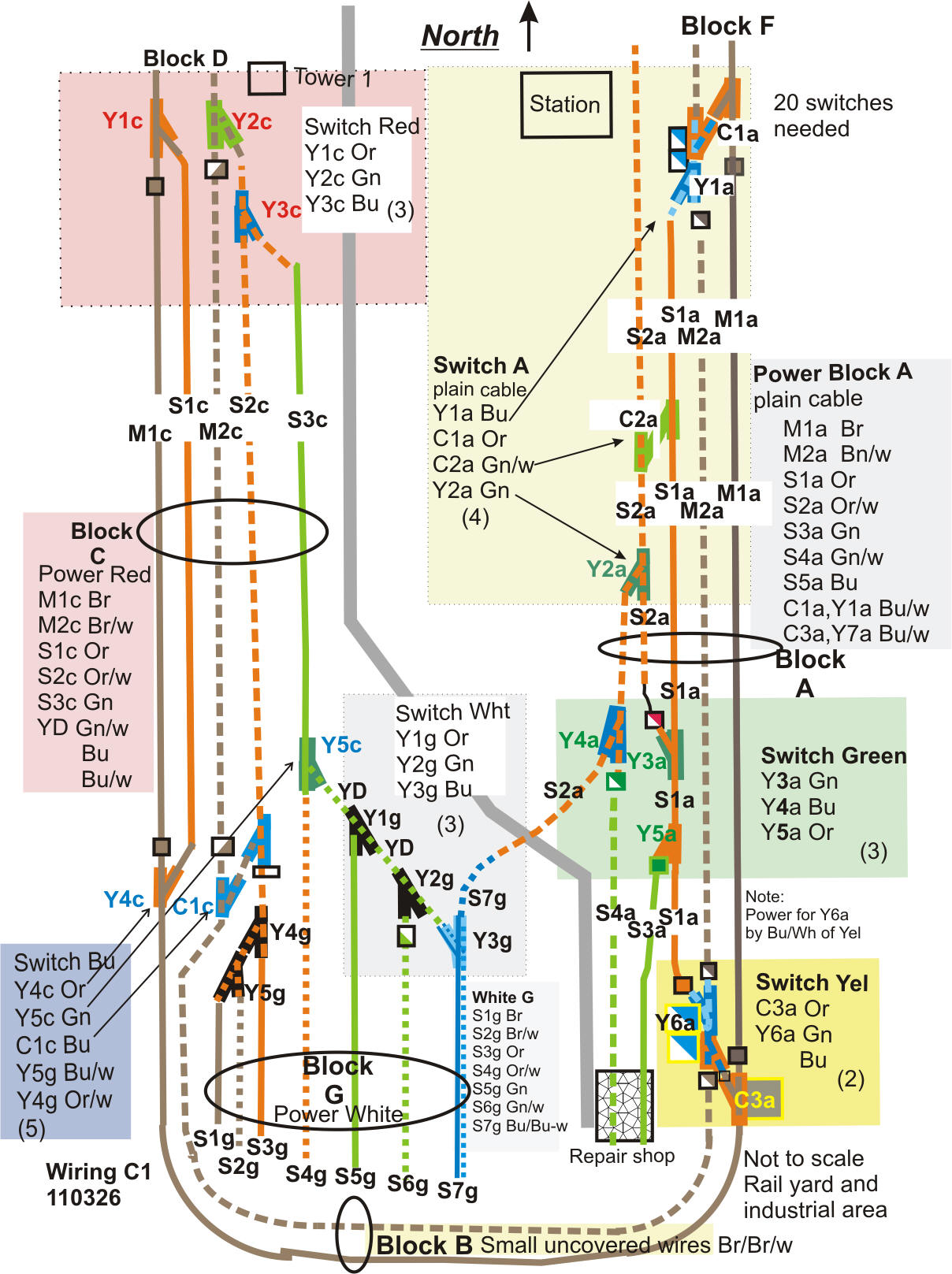
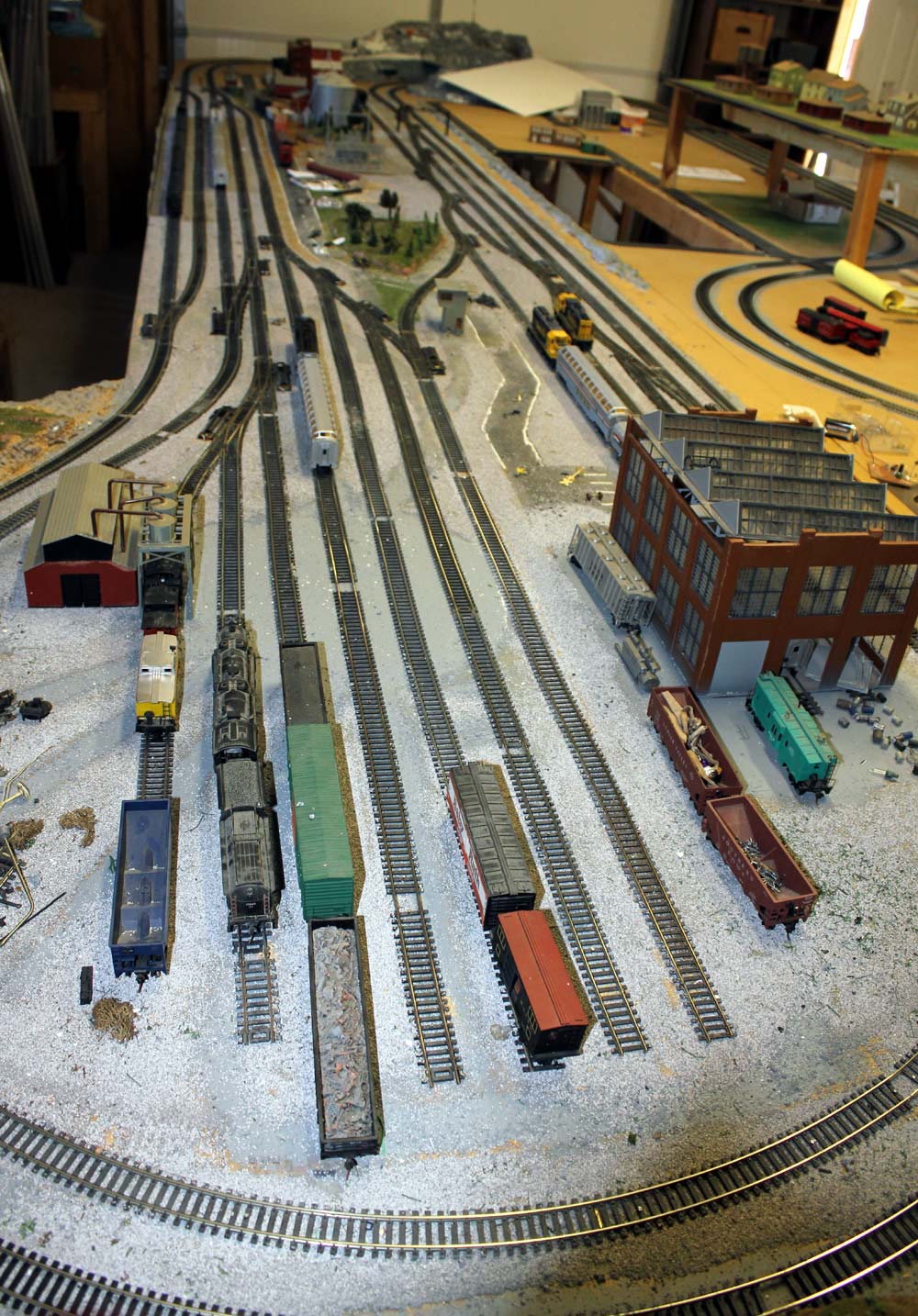
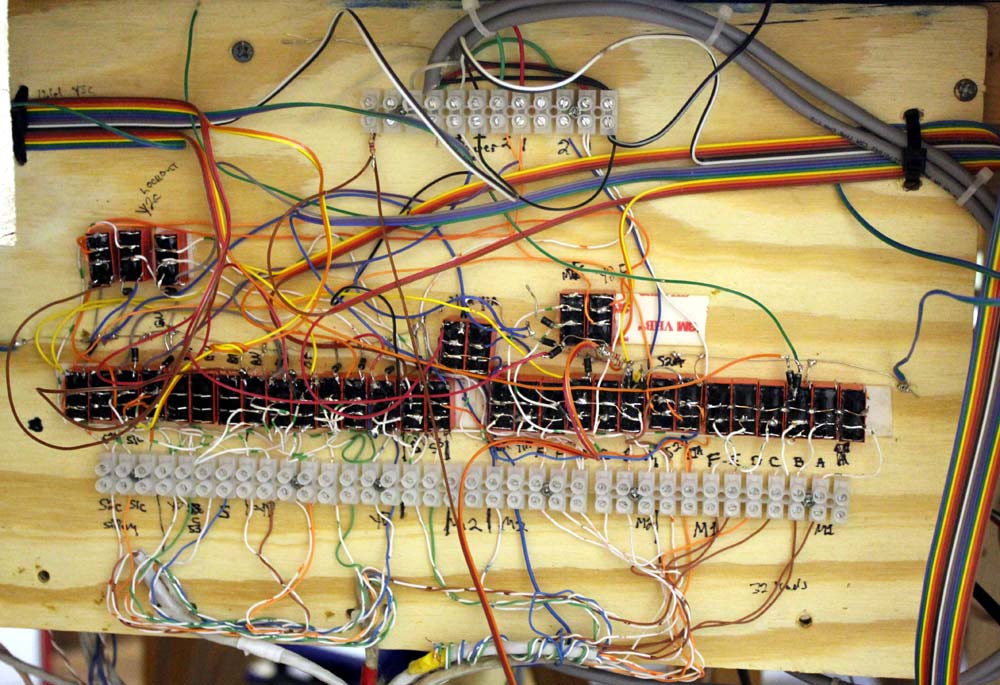
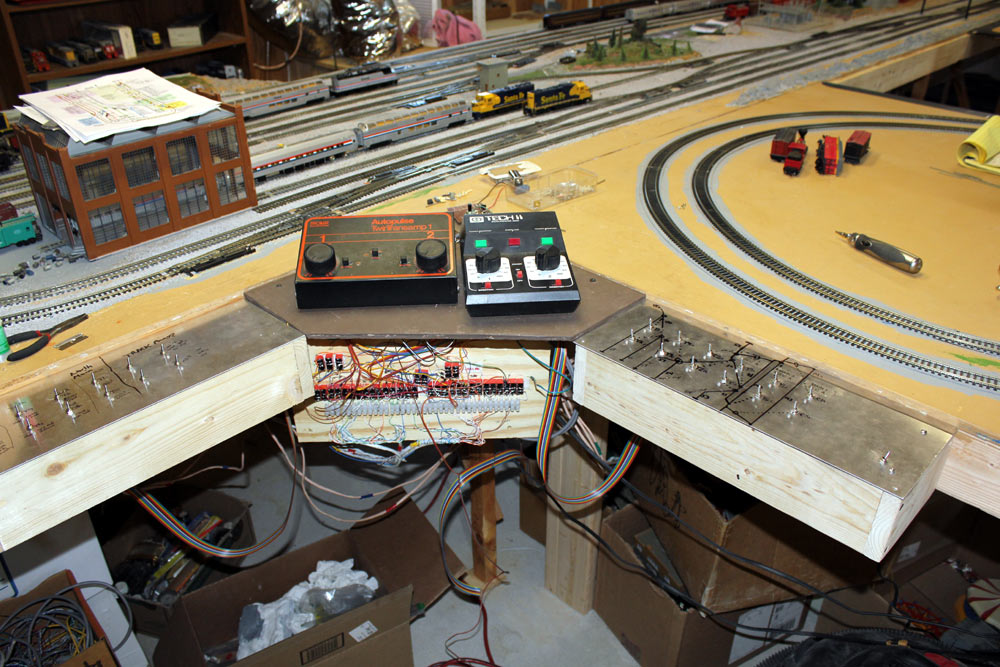
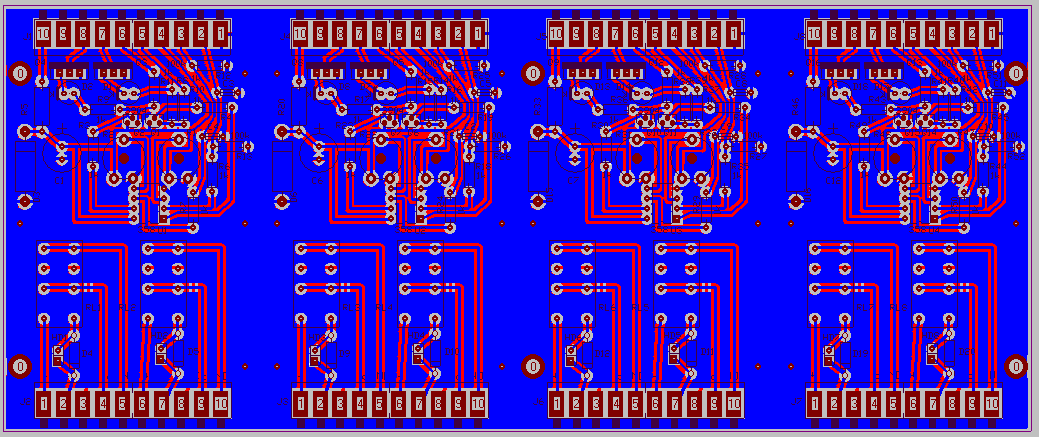

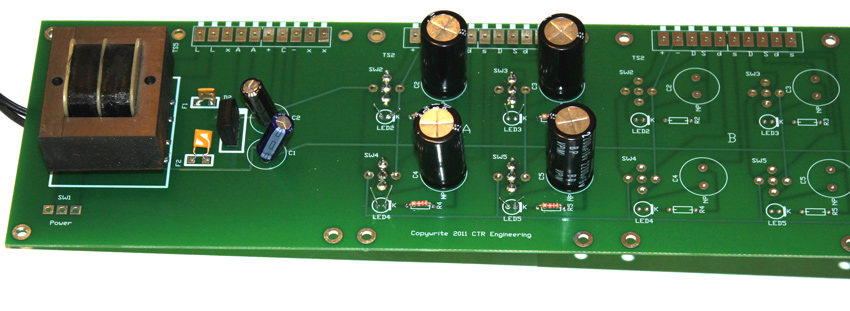
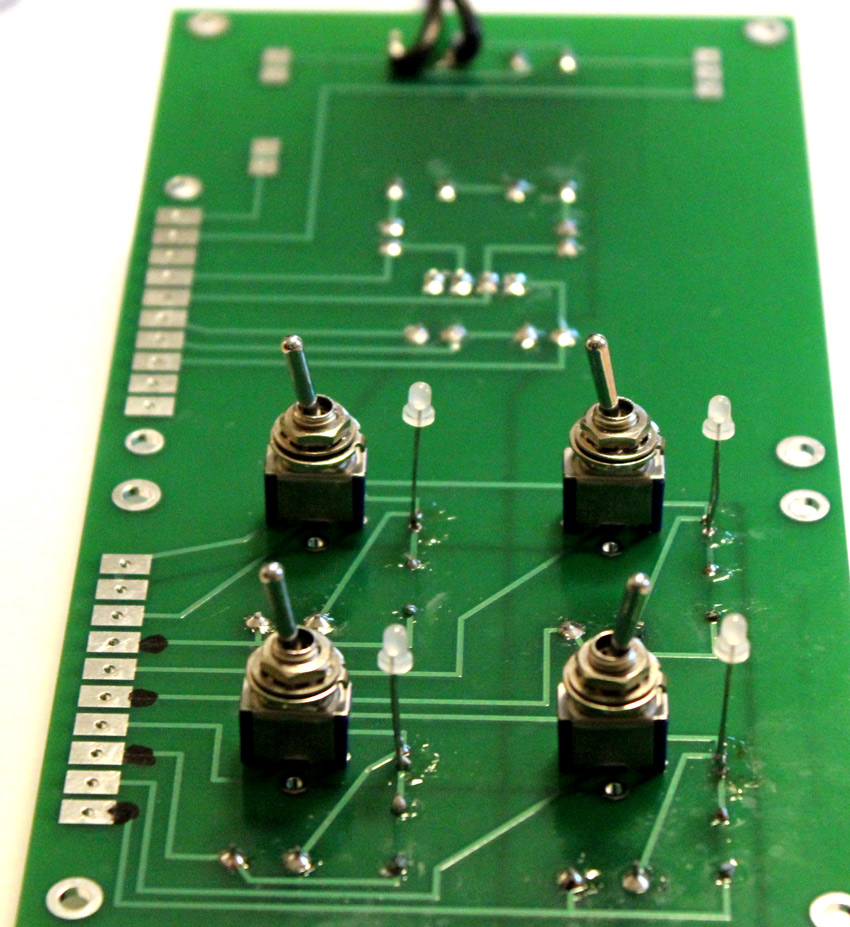
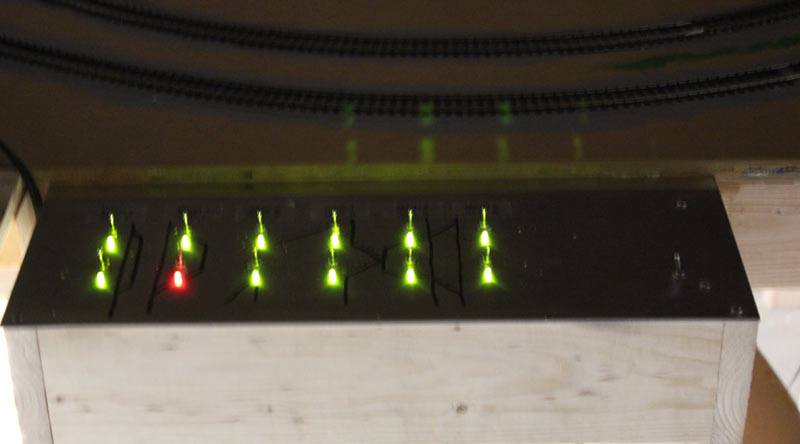

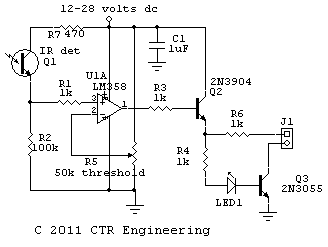
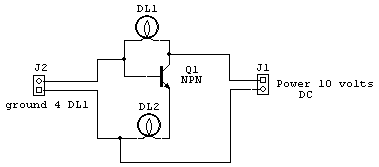
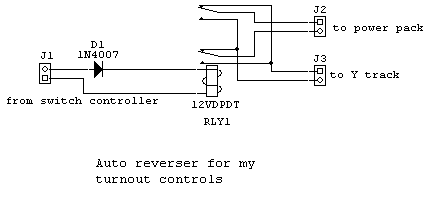 +
+